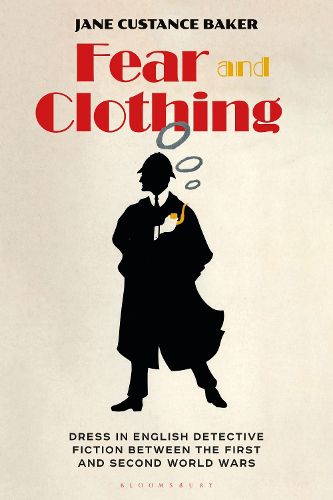Readings Newsletter
Become a Readings Member to make your shopping experience even easier.
Sign in or sign up for free!
You’re not far away from qualifying for FREE standard shipping within Australia
You’ve qualified for FREE standard shipping within Australia
The cart is loading…






Through analyzing dress in detective fiction, Fear and Clothing reveals a cultural history of identity affected by the social upheaval caused by war. In-depth analysis of interwar publications by a comprehensive range of writers reveals readers' anxieties and fears about class, gender and race and how these changed over the period. Although read and written by both men and women, detective fiction was deemed at the time to be a masculine and high-status entertainment. However the literature demonstrates an admiration and acceptance of the woman's identity, performed during the Great War and continuing throughout the interwar period, as girl pal and female gentleman.
In chapters that explore age, character, class, masculinity, performative womanhood and race, Jane Custance Baker exposes how dress was a status marker to both male and female readers, made anxious by social change brought about by war. Dress in detective fiction reveals a set of signs to be read, digested, and possibly employed to model the individual reader's personal dress choices. Fear and Clothing sheds new light on dress of the period, the social and cultural environment as depicted in the popular fiction genre in the early 20th century, and is of interest to researchers and scholars within dress history, literary and historical studies, as well as anyone who enjoys the history of detective fiction.
$9.00 standard shipping within Australia
FREE standard shipping within Australia for orders over $100.00
Express & International shipping calculated at checkout
Through analyzing dress in detective fiction, Fear and Clothing reveals a cultural history of identity affected by the social upheaval caused by war. In-depth analysis of interwar publications by a comprehensive range of writers reveals readers' anxieties and fears about class, gender and race and how these changed over the period. Although read and written by both men and women, detective fiction was deemed at the time to be a masculine and high-status entertainment. However the literature demonstrates an admiration and acceptance of the woman's identity, performed during the Great War and continuing throughout the interwar period, as girl pal and female gentleman.
In chapters that explore age, character, class, masculinity, performative womanhood and race, Jane Custance Baker exposes how dress was a status marker to both male and female readers, made anxious by social change brought about by war. Dress in detective fiction reveals a set of signs to be read, digested, and possibly employed to model the individual reader's personal dress choices. Fear and Clothing sheds new light on dress of the period, the social and cultural environment as depicted in the popular fiction genre in the early 20th century, and is of interest to researchers and scholars within dress history, literary and historical studies, as well as anyone who enjoys the history of detective fiction.